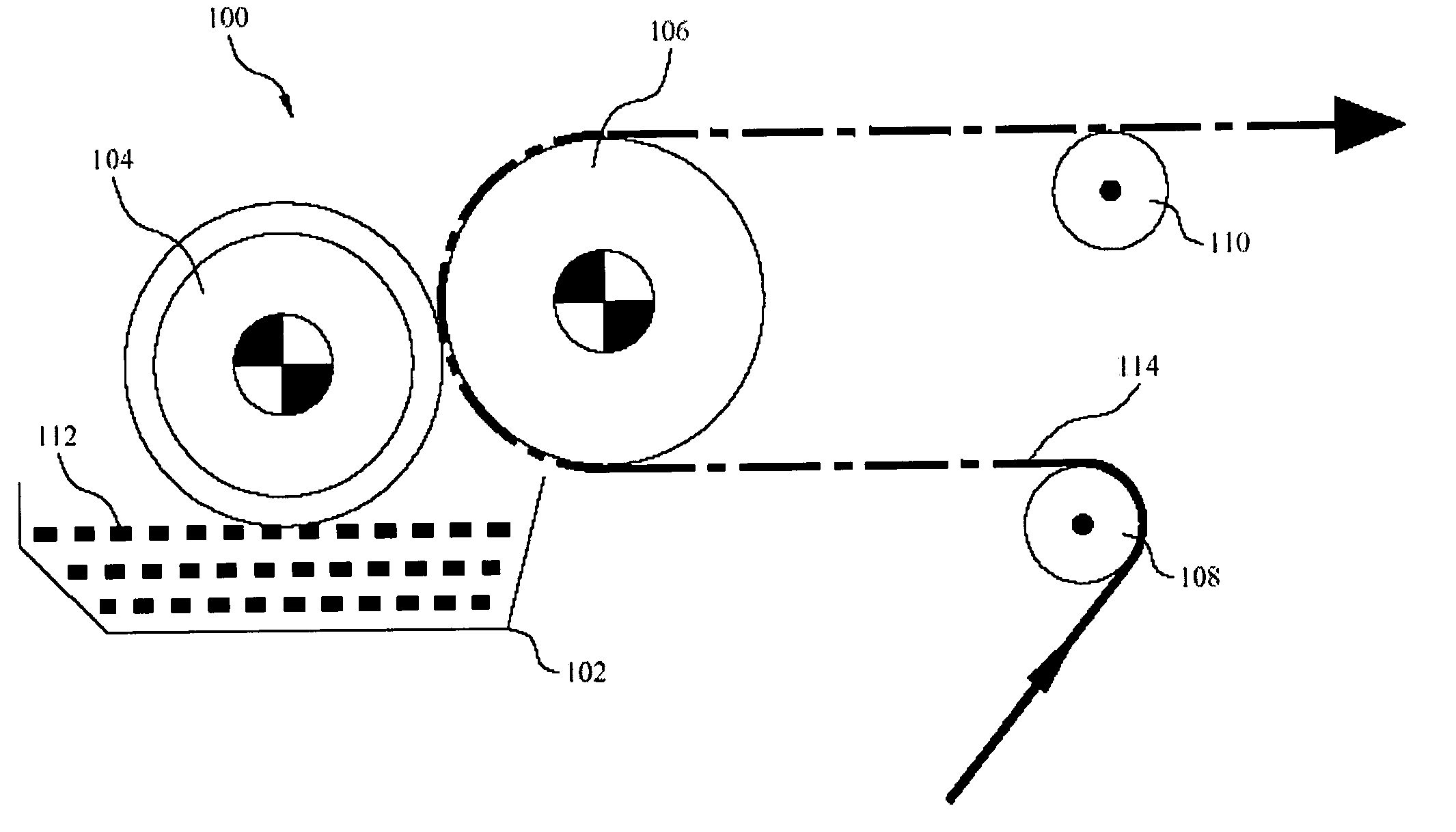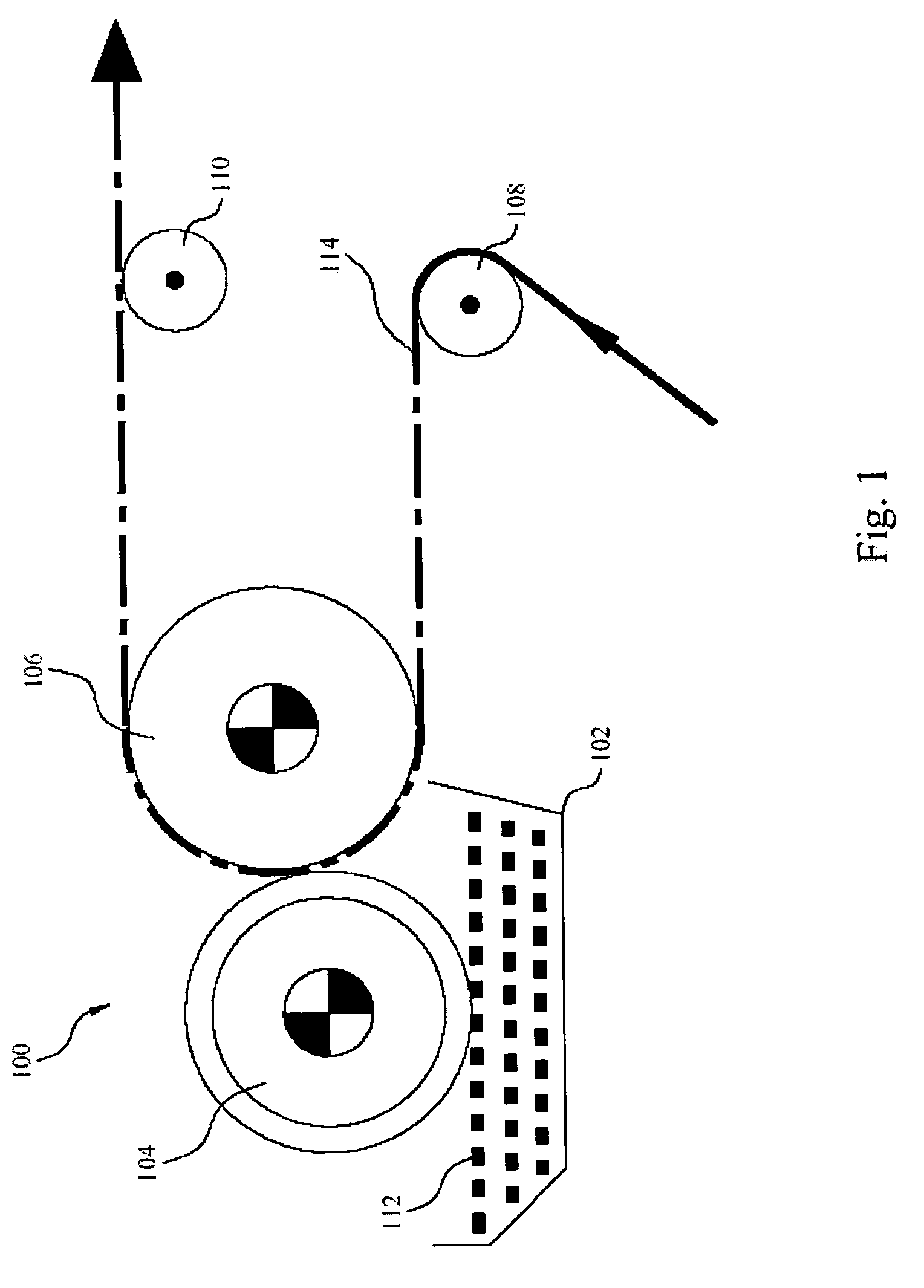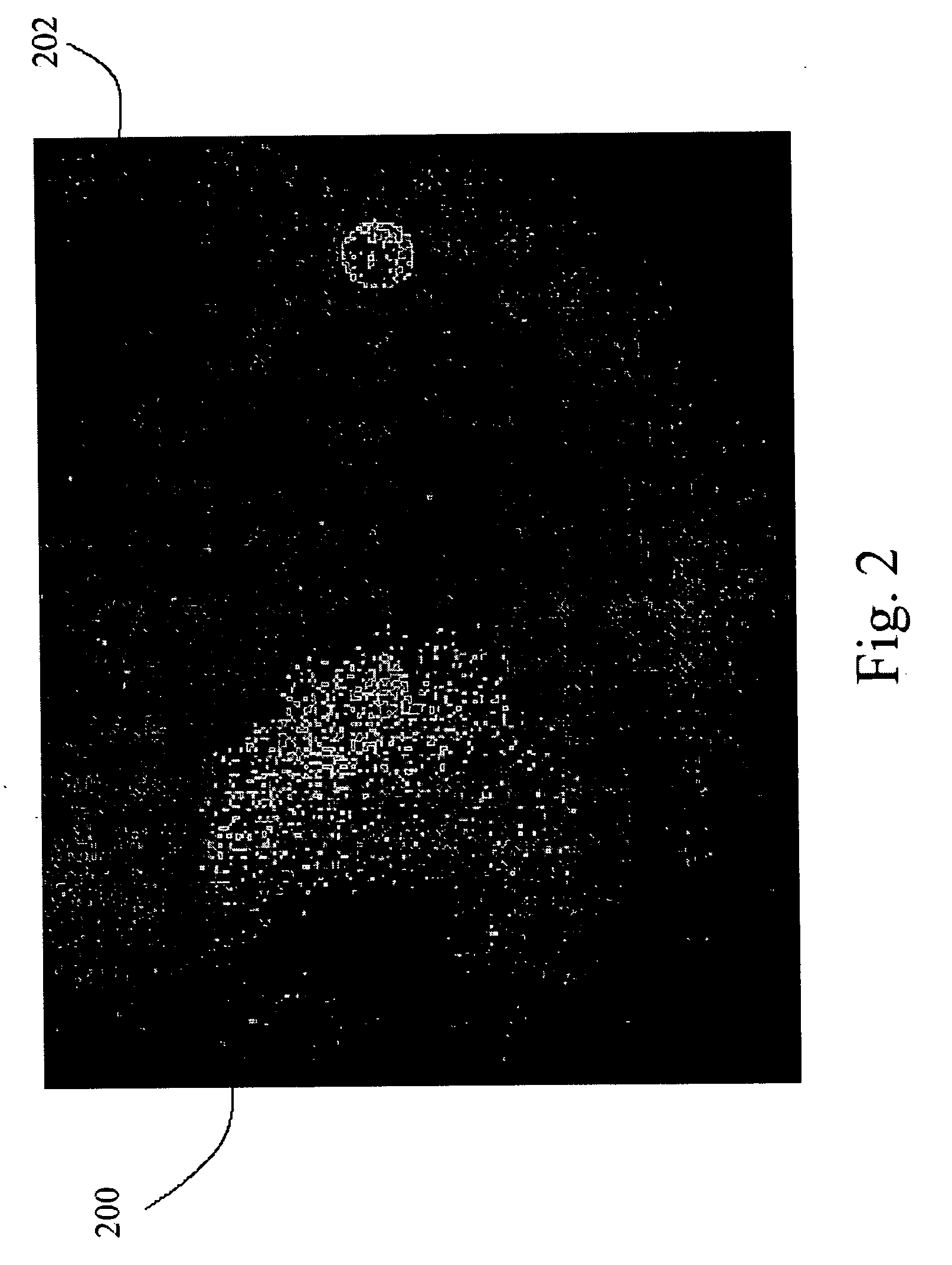Method for treating surfaces of textile
a textile and surface technology, applied in the field of textile surface treatment, can solve the problems of uneven and unfirmly coated spreading layer, insufficient comfort of customers, and high cost of apparatus, so as to increase the multi-functionality of textiles, save equipment investment, and improve the effect of warmth and washability
- Summary
- Abstract
- Description
- Claims
- Application Information
AI Technical Summary
Benefits of technology
Problems solved by technology
Method used
Image
Examples
Embodiment Construction
[0018] For more clarifying the method for treating surfaces of textile of the present invention, the following embodiment are described in detail how the method disclosed by the present invention is applied, and more specifically, the testing result disclosed herein is helpful to comprehend the advantages of the present invention.
[0019] Reference is made to FIG. 1, which depicts a diagram of the gravure coating apparatus for treating surfaces according to a preferred embodiment of the present invention. The gravure printing apparatus 100 comprises a tank 102, a gravure roll 104, a pressure roller 106 and guiding rollers 108 and 110. A spreading solution 112 with various functions such as hydrophobicity, anti-bacteria and hydrophilicity (hygroscopicity), which is formed by a polymer composition with at least one reactive group, is placed in the tank 102 with an opening, wherein water, alcohol, reactive diluent or other organic hydrocarbon solvent may act as a solvent of the spreadin...
PUM
| Property | Measurement | Unit |
|---|---|---|
| Temperature | aaaaa | aaaaa |
| Temperature | aaaaa | aaaaa |
| Weight | aaaaa | aaaaa |
Abstract
Description
Claims
Application Information
 Login to View More
Login to View More - R&D
- Intellectual Property
- Life Sciences
- Materials
- Tech Scout
- Unparalleled Data Quality
- Higher Quality Content
- 60% Fewer Hallucinations
Browse by: Latest US Patents, China's latest patents, Technical Efficacy Thesaurus, Application Domain, Technology Topic, Popular Technical Reports.
© 2025 PatSnap. All rights reserved.Legal|Privacy policy|Modern Slavery Act Transparency Statement|Sitemap|About US| Contact US: help@patsnap.com



